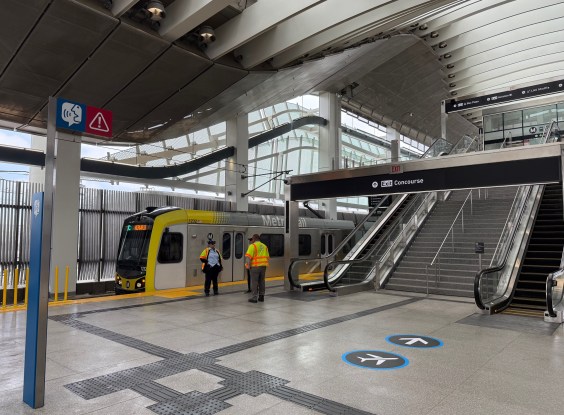This is a pretty revealing (read: depressing) exchange between a U.S. representative and the president of the American Association of State Highway and Transportation Officials, which represents state DOTs.
The transportation agencies that comprise AASHTO essentially dictate how streets are designed throughout the U.S. They are aware that pedestrian and cyclist deaths are not declining as fast as total traffic fatalities. But don't worry, says AASHTO President Jon Cox, because there is absolutely no problem with the design of America's streets.
Around 49 seconds in to this clip from a House Transportation and Infrastructure Committee hearing on Tuesday, Representative Rick Larsen of Washington State questions Cox about the rising share of pedestrian and cyclist fatalities:
A few of us asked the [Government Accountability Office] to look at this trend. And one suggestion we've heard is that we're over-engineering or overbuilding roads so the posted speed limit may not match the size of the road. As a result that contributes to a more unsafe road for bikers and pedestrians. Has AASHTO looked at this issue -- the relationship between design standards and road safety for bikers and pedestrians?
Cox, who runs the state DOT in Wyoming -- the least populated state in the union! -- gave this response (emphasis added):
Yes. The simple answer is, yes, AASHTO is looking at that. Let me just expand here for one second. I will tell you that in Wyoming, and I think this is a microcosm of the discussions going on in other places... I'm talking about the highway system, non-urban, at this point (in Wyoming)... The legislature there is talking about how does highway design and driver and cyclist behavior interact in terms of the fatality count. We quintupled this last year... in terms of cyclist deaths. But when we analyzed that -- and by the way those numbers are not nearly as big as what they might sound -- when we analyzed that... what we found was behavior -- driver behavior and cyclist behavior -- was really 100 percent the issue, not the design of the pavement.
And that's all Cox had to say about it. Classic! Here we have a state highway official from Wyoming, based solely on his experience with rural roads, deflecting all responsibility for national trends in traffic fatalities from the engineers he represents.
So no need to worry about whether street design plays a role in thousands of preventable deaths every year. Satisfied?
The GAO report Larsen refers to has yet to be released, but it sounds like it will be an interesting read. Larsen has also been pushing for a bill he calls "TIGER cubs" that would help small- and medium-sized cities compete for direct access to federal funding for their transportation projects.





